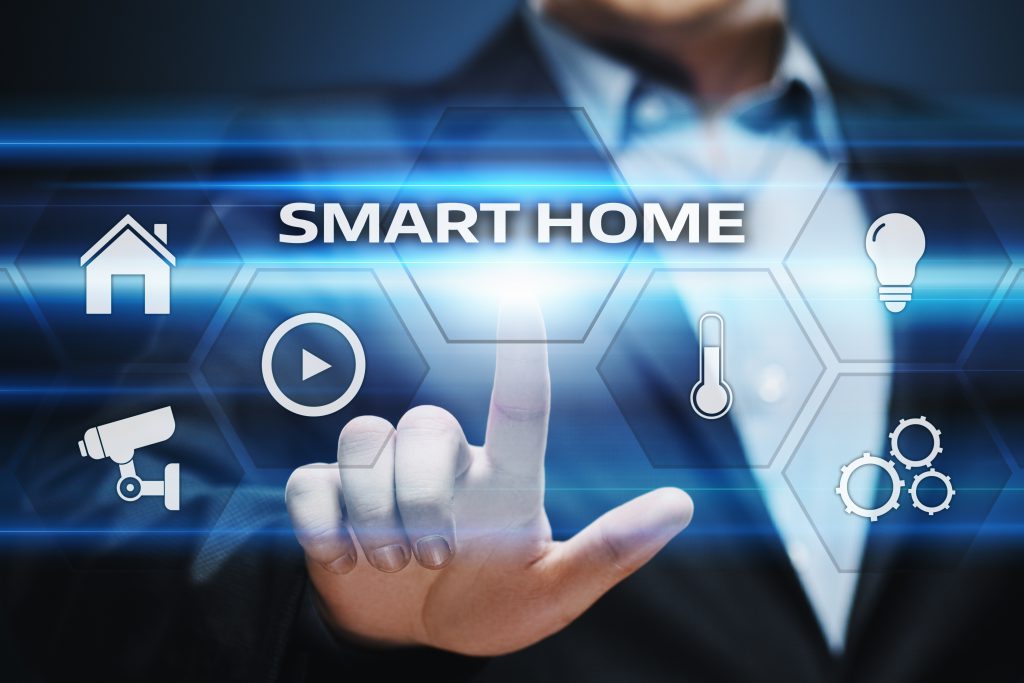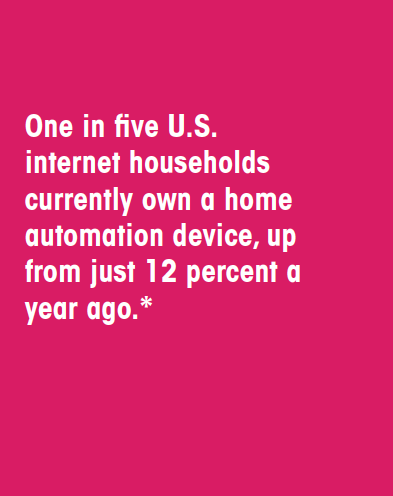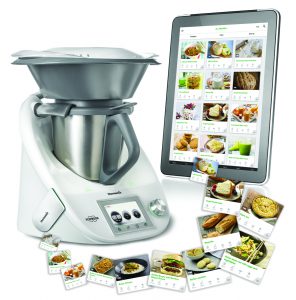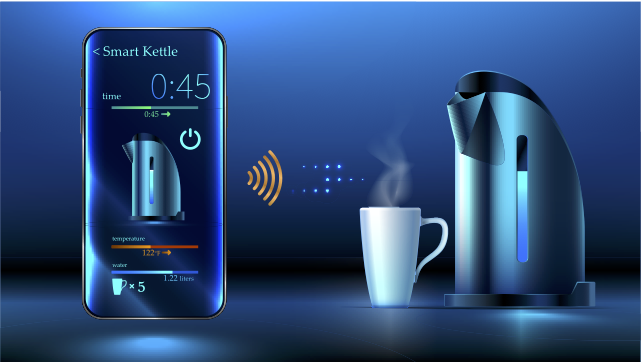by Joe Derochowski, The NPD Group
In the first 11 months of 2017, U.S. dollar sales of home automation products increased 40 percent, with strong growth across all device types, according to The NPD Group’s Retail Tracking Service. Home automation products were among the fastest selling items during the 2017 holiday season – over Thanksgiving week and Cyber Week, home automation sales almost doubled from the same two weeks in 2016.
NPD’s Connected Intelligence data shows that nearly one in five U.S. internet households currently own a home automation device, up from just 12 percent a year ago*. This trend hasn’t hit the home-products industry to the degree it has hit the tech space with things like security and monitoring products, which account for the largest share of category dollar sales. Only 3 percent of U.S. households have smart devices in their kitchen, but just over a quarter of people are interested in them – this is most prevalent among people who think they are “accomplished chefs” or “very good cooks,” according to NPD’s 2017 Kitchen Audit.

What does this tell us about the future of “Smart” as it relates to the home industry?
Given the increase in the number of people interested in and comfortable with a variety of smart devices, combined with the population shifts that support an increase in people developing their cooking skills, “smart” is poised to grow. The key to fueling this growth will lie in just how smart we are as an industry when we think about, develop and present “smart” home products to consumers.
What’s the “ER”?
 The first thing we need to do is shift our focus from the technology behind the product. In our haste to launch a smart home product, we often skip over the step of understanding and addressing the consumer need we are trying to solve with the product. These products are going to be replacing a consumer behavior, or another product in their homes, so they need an “ER” – they will have to be better, faster, cheaper, easier or healthier than the product or the behavior they are replacing.
The first thing we need to do is shift our focus from the technology behind the product. In our haste to launch a smart home product, we often skip over the step of understanding and addressing the consumer need we are trying to solve with the product. These products are going to be replacing a consumer behavior, or another product in their homes, so they need an “ER” – they will have to be better, faster, cheaper, easier or healthier than the product or the behavior they are replacing.
The reality is consumers rarely want technology for the sake of technology. There are many opportunities for smart products to add convenience to meal planning, shopping, preparation, cooking, entertaining, eating, clean-up and storage, and that is just related to our food. Whether a product lets us know when food is cooked to the perfect temperature, how many allergens are in the air or allows us to come home to a clean home by controlling the vacuum while traveling, there are many in-home needs ripe for smart technology solutions. Ultimately, it comes down to addressing the “I wish,” “I hate” and “I love” thoughts related to our daily home activities.
Value & Price
 Pricing fundamentals still apply to smart products, and the cost still needs to fit into the consumer’s budget. Popular home automation products display the power of price – video doorbells, home automation kits and smart lighting are quickly growing segments within the home automation category, and they are generally accessibly priced. When the price aligns more closely with the cost the consumer associates with the product or behavior, the value becomes a much clearer concept. Typical category price bands will play a role in the decision-making process and therefore need to be part of the price-setting discussion. A smart product’s benefits relative to the product or behavior should be taken into account in order to understand the value for the consumer, not the value relative to other smart devices.
Pricing fundamentals still apply to smart products, and the cost still needs to fit into the consumer’s budget. Popular home automation products display the power of price – video doorbells, home automation kits and smart lighting are quickly growing segments within the home automation category, and they are generally accessibly priced. When the price aligns more closely with the cost the consumer associates with the product or behavior, the value becomes a much clearer concept. Typical category price bands will play a role in the decision-making process and therefore need to be part of the price-setting discussion. A smart product’s benefits relative to the product or behavior should be taken into account in order to understand the value for the consumer, not the value relative to other smart devices.
Think Beyond the App
Today, every smart product has an app – how many apps do we have space for in our lives or on our devices? Yes, having an app tied to our products is helpful, but we need to think broader. We usually use more than one appliance or tool when preparing a meal, so how does your product communicate with others? Imagine a world where a recipe app is designed to communicate with each appliance and coordinate the prep and cook time of multiple dishes so they are ready at the same time. Or, think about how nice it would be to scan your refrigerator and pantry from the office to see if you have the items needed for a recipe and then ordering them for delivery in minutes.
Smart technology can bring these kinds of ideas closer to reality for today’s consumers, making everyday tasks much easier. One way of doing this is integrating the ability to work with voice-controlled platforms like the Amazon Echo and Google Home. As of early October 2017, these products have already been welcomed into 15 percent of U.S. internet households, according to information from NPD’s Connected Intelligence. Voice-control makes smart applications easier for even the not-so-tech-savvy consumer.

The more linked our products are to one another, the more information we can gather on the consumer and their usage of the products, as well as monitor how well the products and technology are performing. The smarter we are about developing “smart” products for the home, the smarter we can become about how to make improvements and become more integrated in the consumer’s life.
“Smart” is the future for the home industry, but we must be smart and remember that marketing fundamentals still apply.
Sources:
- The NPD Group/Retail Tracking Service, Home Automation, Jan.-Nov. 2017
- The NPD Group/Retail Tracking Service, Smart Entry, Video Doorbells, Jan.-Nov. 2017
*Includes the core of the home automation category – IP cameras, smart lighting, sensors, power, thermostats, and entry products.



